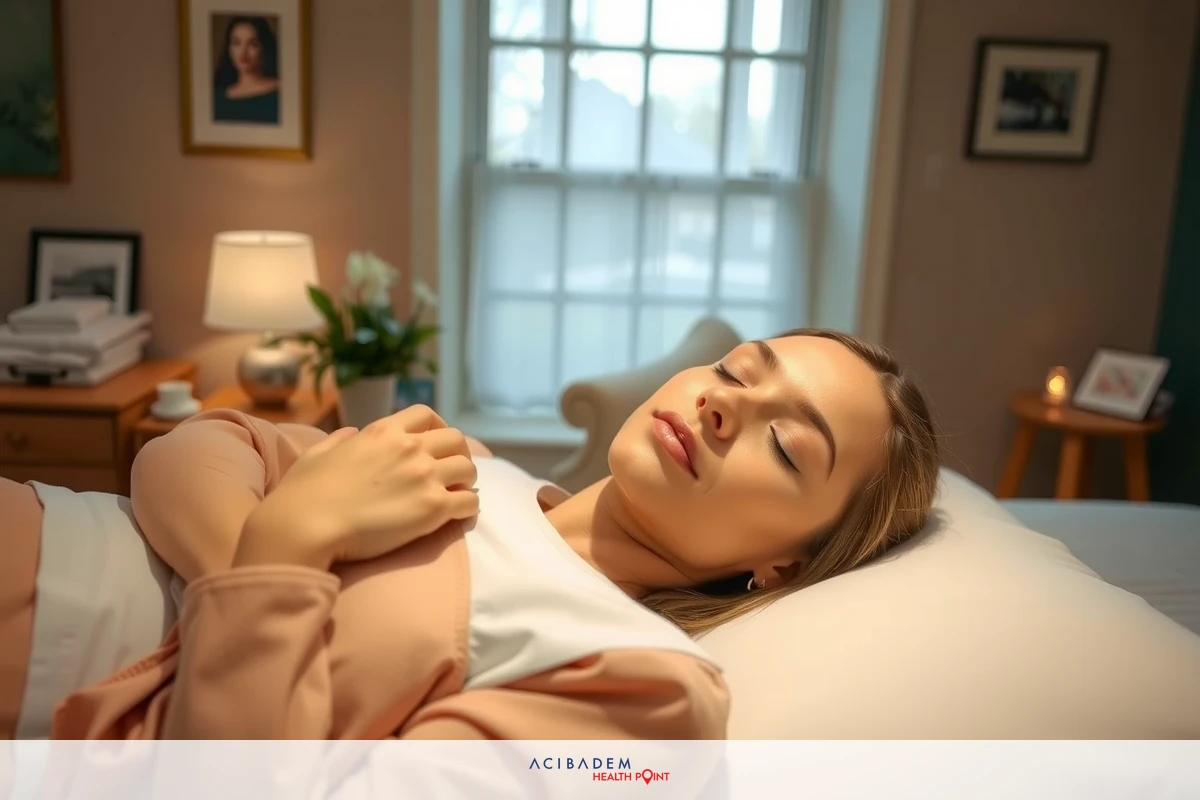Can You Sleep on Your Side After Rhinoplasty?
Can You Sleep on Your Side After Rhinoplasty? Rhinoplasty, or a nose job, requires a certain level of care and caution during the recovery period. One common question that arises is whether it’s safe to sleep on your side after this operation. The healing process after rhinoplasty is crucial, and it’s essential to follow the recommended guidelines for activities such as sleeping to ensure a smooth and successful recovery.
Sleeping positions can have an impact on the swelling and healing of your nose post-surgery. Lying flat or on your side might cause discomfort or even disrupt the healing process. Therefore, understanding the correct sleeping position becomes pivotal in your post-operative care. This piece provides information about the preferred sleeping positions after rhinoplasty, the benefits of these positions, and tips for achieving comfortable sleep during your recovery.
Sleeping Positions After Rhinoplasty
After undergoing a rhinoplasty procedure, it is often recommended to sleep in an elevated position to aid in the recovery process. This means sleeping on your back with your head slightly raised, often with the support of pillows. The aim is to minimize swelling and promote optimal blood circulation to the nose area. Sleeping on your side or stomach can exert pressure on the nose, which could potentially lead to complications in the healing process.
Avoiding sleeping on your side after rhinoplasty is particularly important during the initial stages of recovery. This is when your nose is most vulnerable and susceptible to changes in shape due to pressure. Side-sleeping could cause a shift in the nasal structure or cause discomfort due to swelling. It’s important to note that each person’s recovery process may vary, so it’s always best to follow the specific instructions provided by your surgeon regarding sleep positions.
Around two to three weeks post-operation, you might start feeling comfortable enough to resume sleeping on your side. However, it’s crucial to be extremely gentle and conscious of your movements. Sudden or harsh movements can cause injury and impact the results of your rhinoplasty. Remember, your recovery and postoperative care are just as important as the surgery itself for achieving the desired results. Thus, adhering strictly to advised sleeping positions can significantly contribute to a successful recovery.
Benefits of Sleeping on Your Back
Sleeping on your back post-rhinoplasty offers numerous benefits that contribute to a smoother recovery process. Firstly, this position aids in reducing swelling, a common side effect after the surgery. When you lie flat or sleep on your side, blood can pool around your surgical area, causing increased swelling and discomfort. By contrast, sleeping on your back with your head elevated helps improve blood circulation and minimizes fluid accumulation around the nose.
Furthermore, sleeping on your back significantly reduces the risk of accidentally bumping or applying pressure to your nose while you sleep. This is particularly important during the initial recovery stage when the nasal structure is still healing and settling into its new shape. Any undue pressure or impact could potentially disrupt the healing process or alter the final result of the rhinoplasty. This risk is considerably higher when sleeping on the side due to potential tossing and turning at night.
Lastly, back-sleeping post-rhinoplasty promotes optimal breathing patterns during sleep. After a rhinoplasty procedure, you might experience temporary changes in your breathing due to swelling inside the nose. Sleeping on your back facilitates better air passage through your nostrils compared to side-sleeping or stomach-sleeping positions. This ensures that you receive adequate oxygen during sleep, which is crucial for healing and recovery. Therefore, while it may require some adjustments if you’re used to sleeping on your side or stomach, adapting to

back-sleeping post-rhinoplasty can yield significant benefits for your recovery and overall comfort.
Tips for Comfortable Sleep
Acquiring comfortable and restful sleep after rhinoplasty can be a challenge, especially if you’re not used to sleeping on your back. However, there are several strategies that you can employ to improve your sleep quality during the recovery period. These tips aim to enhance comfort, reduce potential complications, and promote optimal healing following your procedure.
- Elevate Your Head: Use pillows or a reclining chair to keep your head elevated above the level of your heart. This helps to reduce swelling and improves blood circulation around the surgical area.
- Invest in a Travel Pillow: A travel or neck pillow can provide support and prevent you from turning onto your side during sleep. It also adds an extra layer of protection around your nose.
- Maintain a Calm Environment: Keep your sleeping environment quiet, dark, and at a comfortable temperature to encourage deeper and more restful sleep.
- Avoid Caffeine and Alcohol: Both can disrupt your sleep cycle and increase swelling. Try to avoid them, especially in the hours leading up to bedtime.
- Stay Hydrated: Keeping hydrated aids in the healing process and prevents dry mouth, especially if you have to breathe through your mouth while your nose is healing.
- Follow Medication Guidelines: If pain is preventing you from sleeping comfortably, speak with your surgeon about pain management solutions.
Remember that the post-operative care following rhinoplasty is a crucial part of the healing process. By implementing these tips, you can ensure a more comfortable rest during your recovery period, ultimately contributing to better outcomes from your surgery.
Frequently Asked Questions
Can I sleep on my side immediately after rhinoplasty?
It is generally recommended to avoid sleeping on your side immediately after rhinoplasty. This is because the nose is still healing and susceptible to changes in shape due to pressure. It's best to follow your surgeon's instructions and sleep in a position that minimizes contact with the surgical area.
How long do I need to sleep on my back after rhinoplasty?
The duration of sleeping on your back can vary depending on your individual healing process. In general, it is advised to sleep on your back for at least two to three weeks post-rhinoplasty. However, it's important to consult with your surgeon for specific guidance tailored to your recovery progress.
What if I accidentally roll onto my side while sleeping?
It's normal to unintentionally change positions during sleep. If you find yourself rolling onto your side, gently reposition yourself onto your back without putting pressure on your nose. Using pillows or a neck pillow can help prevent turning onto your side during sleep.
Will sleeping on my back affect my ability to breathe properly?
Sleeping on your back can actually promote better breathing during the recovery period. After rhinoplasty, swelling inside the nose may temporarily affect nasal airflow. Sleeping on your back helps keep the nasal passages open and facilitates optimal breathing.
What if I have trouble falling asleep on my back?
Adjusting to sleeping on your back may take some time, especially if you're accustomed to sleeping in other positions. To make the transition easier, try using additional pillows for support, listening to calming music or white noise, practicing relaxation techniques before bed, and establishing a consistent bedtime routine. If difficulties persist, consult with your surgeon for further guidance.








